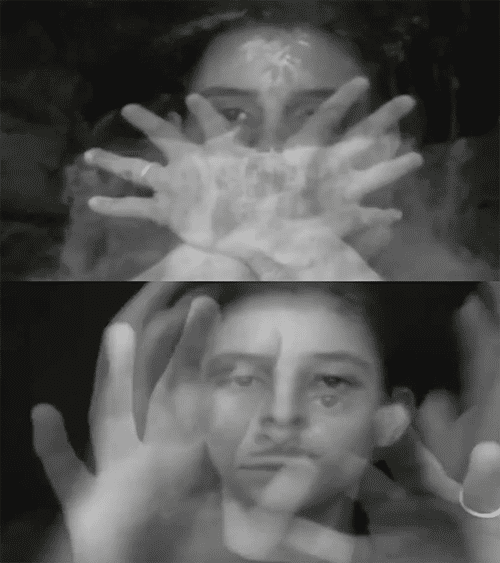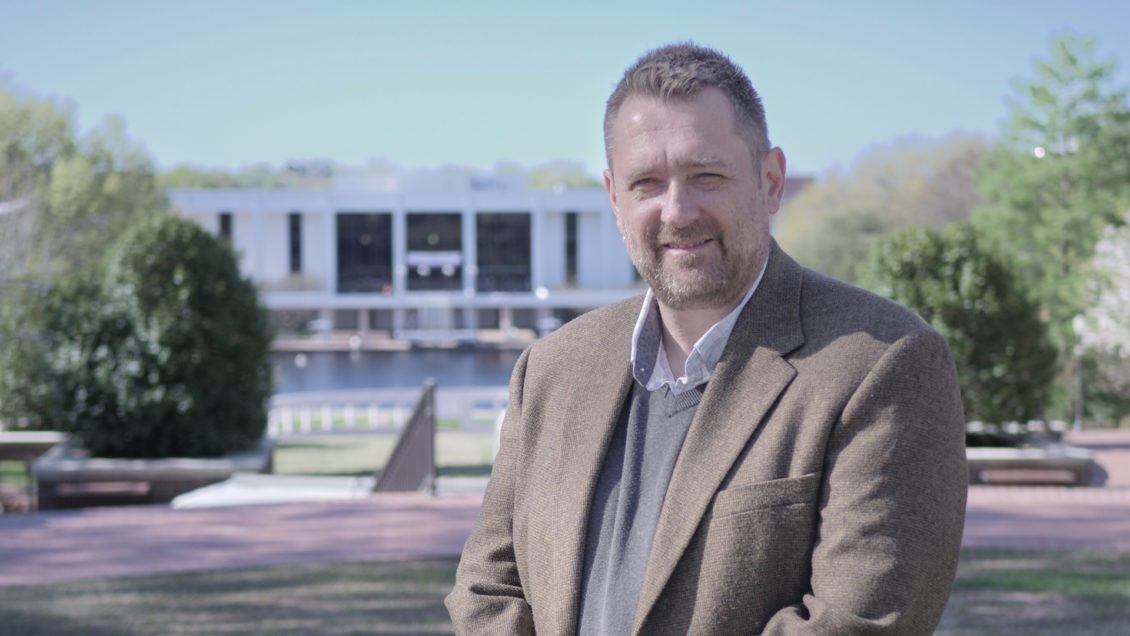Clemson faculty member Jody Cripps is leading the development of an emerging art form that flows from the culture of deaf people.
Music is the form of art most closely associated with hearing, but do deaf people experience it as well?
“Yes, we do,” says Jody Cripps, assistant professor of American Sign Language (ASL) at Clemson University. But the experience he refers to is not the feel of vibrations of audible sound.
Cripps has dedicated years of research to the emerging art form known as “signed music.” He and his colleagues—including Ely Lyonblum, Anita Small, and more describe signed music as “wholly autonomous from the auditory experience. While it is pleasing to the eyes, just as conventional music pleases the ears, it has parameters that are completely different from musical forms hearing audiences are used to, such as audible pitch.”
To begin to understand what signed music is, it helps to understand what it is not.
“It falls along a continuum, but is distinct from signed language poetry and dance,” Cripps and his team says. It is also not the same as ASL interpretations or translations of audible songs. Instead, it derives from the shared experiences in the culture of deaf people.
I believe this work is worthy of greater recognition and wider acceptance. We need to broaden our understanding to include more diversity in music. That’s my appeal.
Jody Cripps, Assistant professor of American Sign Language
In March, Cripps delivered a keynote address entitled “A Journey in Understanding Signed Music” for the Disruptions Series at the Carleton University Art Gallery, explaining the history and possible future of signed music.
“My own journey with signed music began with the deep impact that my family had on me,” he said.

His sister, Janis Cripps, is a signing musician. Her work, entitled “Eyes,” is an example of non-lyrical signed music. Jody Cripps presented a video of the song during his keynote. Throughout the piece, the artist’s hands and eyes create rhythmic expressions that are superimposed on images from nature. While the expressions in “Eyes” do not require an understanding of ASL to appreciate, the similarities to signed language are apparent.
“It opened my opened my eyes to the possibilities of innovations in signed music,” Cripps said about his sister’s work.
His study of signed language and music as well as collaborations with other artists—including Pamela Witcher, Jason Begue, Hodan Youssouf and more—led him to begin composing his own works such as “Rain” and “Larry the Lion.” In those works, distinct ASL lyrics and non-lyrics are presented along with other flourishes to create unique musical expressions.
Although the works of Cripps and other signed musicians display a wide array of visual styles and themes, each shares a unified bond with the culture of deaf people. The cultural aspect of the music is what much of Cripps’ research focuses on, examining the art form through the lens of ethnomusicology.
“Ethnomusicology examines the relationship between music and culture. It uses the lens of culture to gain a deeper understanding of music, including the norms and behaviors that are considered culturally appropriate,” Cripps said. “This work is still new, but with the proper lens, these issues are beginning to come into focus.”
The special connection to the culture of deaf people distinguishes signed music—composed originally for audiences who are signers—from signed translations (i.e., English-to-ASL).

Comparisons between the experience of audible music and signed music are difficult to make, although Cripps has begun to look into the similarities and differences. His current research includes interviewing the deaf and hearing audience members and one was a CODA (hearing children born to deaf parents) about their reactions to signed music, and the interviews with signed language musicians about their thoughts and feelings about becoming creators.
“You have to be really vulnerable,” he said, reflecting on his own creative process. “You have to put your heart and soul into it.”
Cripps is ambitious about the future of signed music. He and his team (Witcher and Youssouf) had proposed some goals for the future of the art form include creation of a signed music curriculum for K-12 students; mentors for younger artists; expert workshops for training on performance in different settings, such as in-person or online; selected performers and researchers to have recorded, documented, and shared open dialogues on signed music to develop creative project plans; more research on other signed language performing arts; multilingual and tactile sign language resources; promotion of authentic creativity in performers’ own signed languages; and inspiring ideas and creations from performers that will bring new materials for research.
“I believe this work is worthy of greater recognition and wider acceptance,” Cripps said. “We need to broaden our understanding to include more diversity in music. That’s my appeal.”
About the College of Architecture, Arts and Humanities
Established in 1996, the College of Architecture, Arts and Humanities celebrates a unique combination of disciplines—Architecture; Art; City Planning; Construction Science and Management; English; History; Languages; Performing Arts; Philosophy; Philosophy; Religion; Real Estate Development and interdisciplinary studies—that enable Clemson University students to imagine, create and connect. CAAH strives to unite the pursuit of knowledge with practical application of that knowledge to build a better and more beautiful world.
Get in touch and we will connect you with the author or another expert.
Or email us at news@clemson.edu

